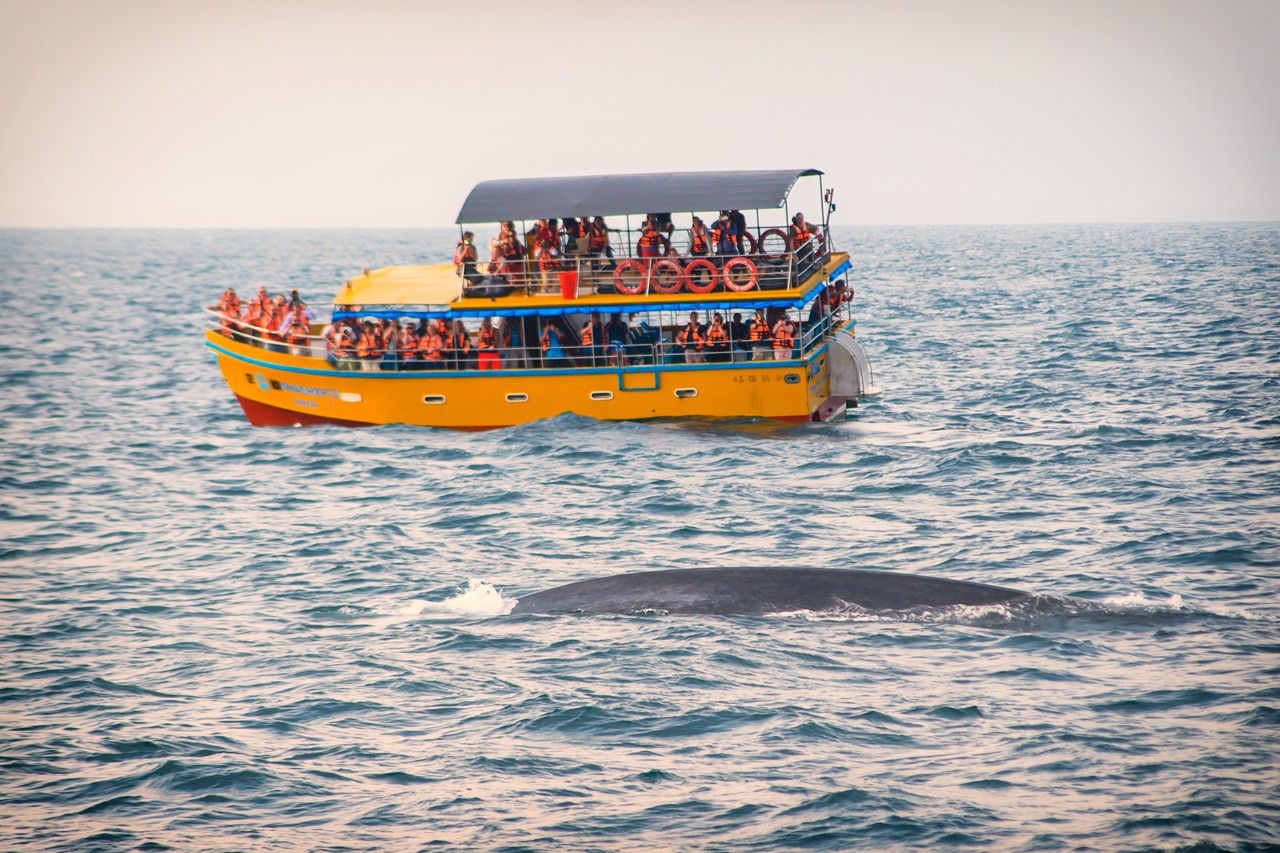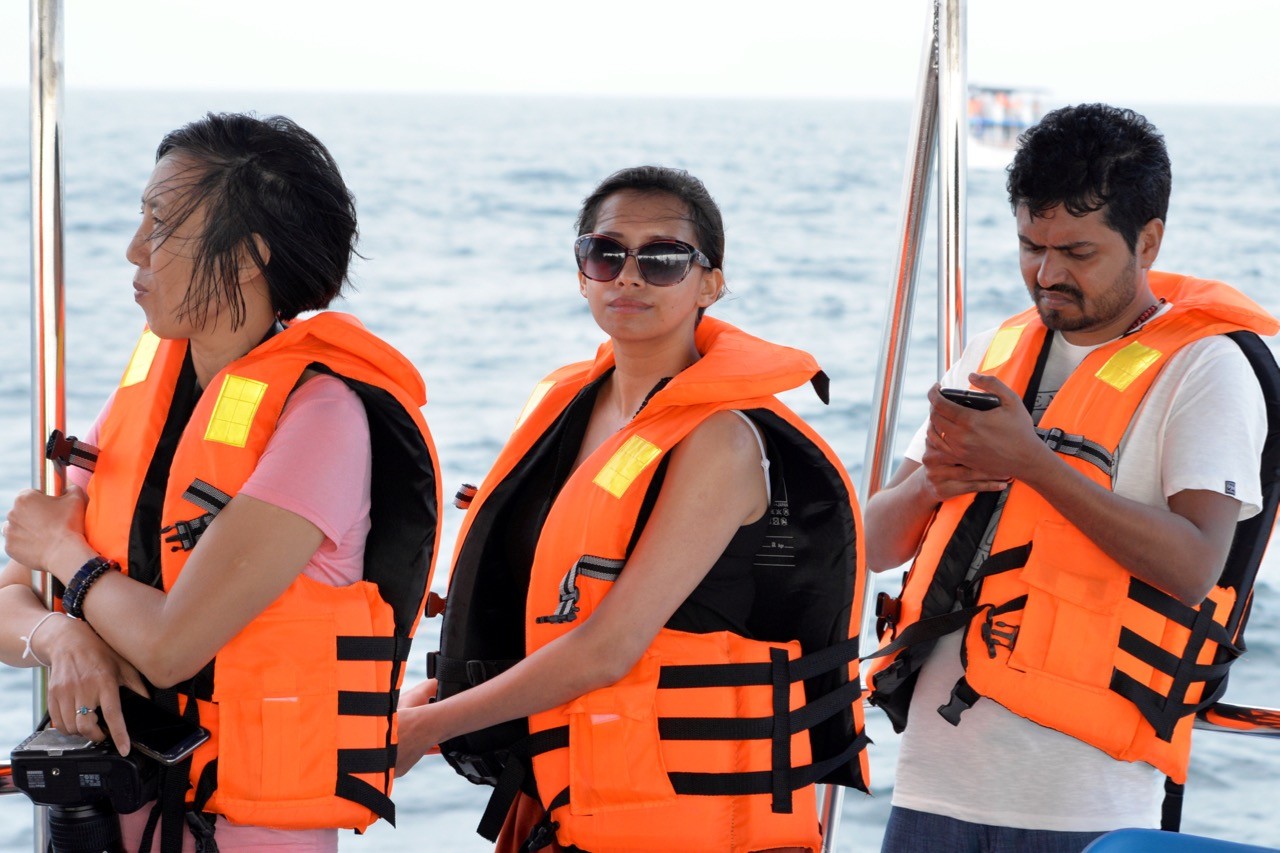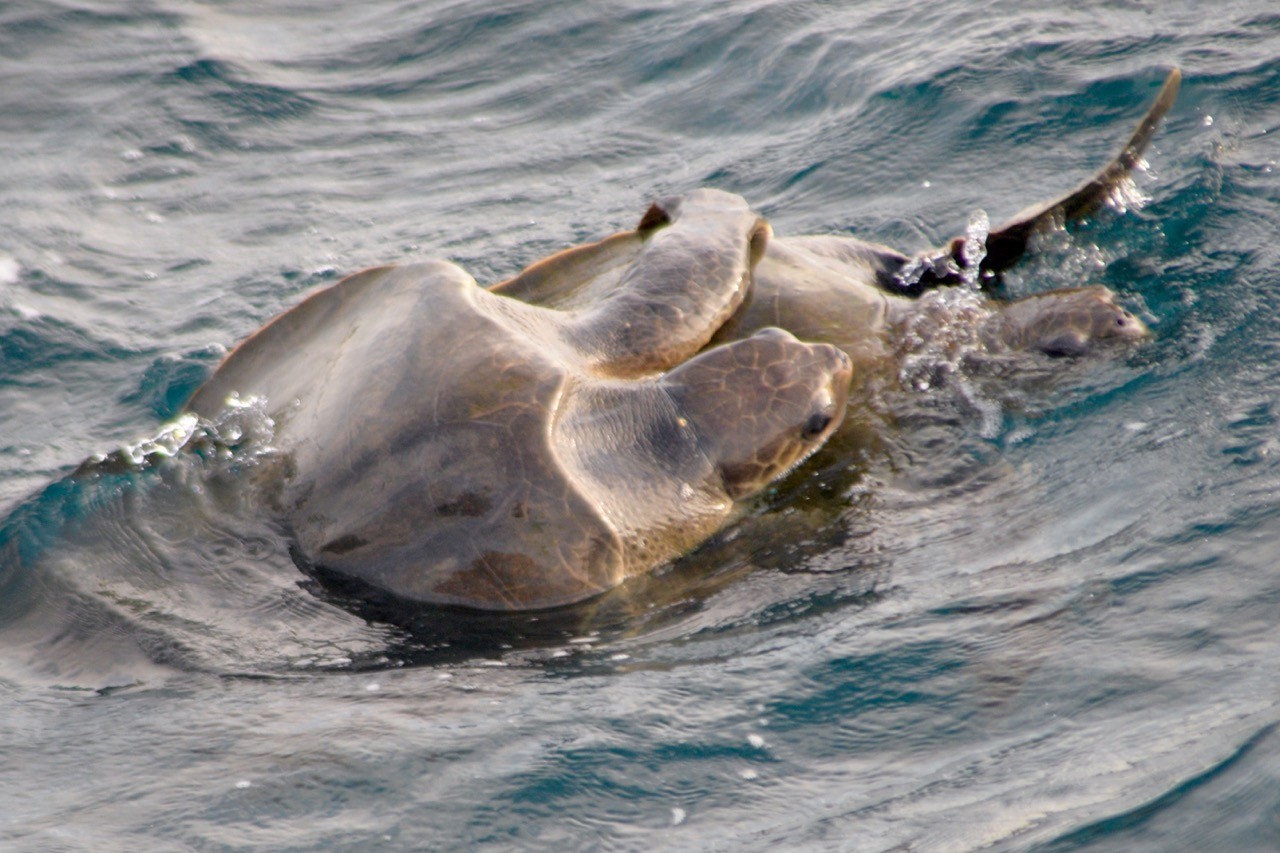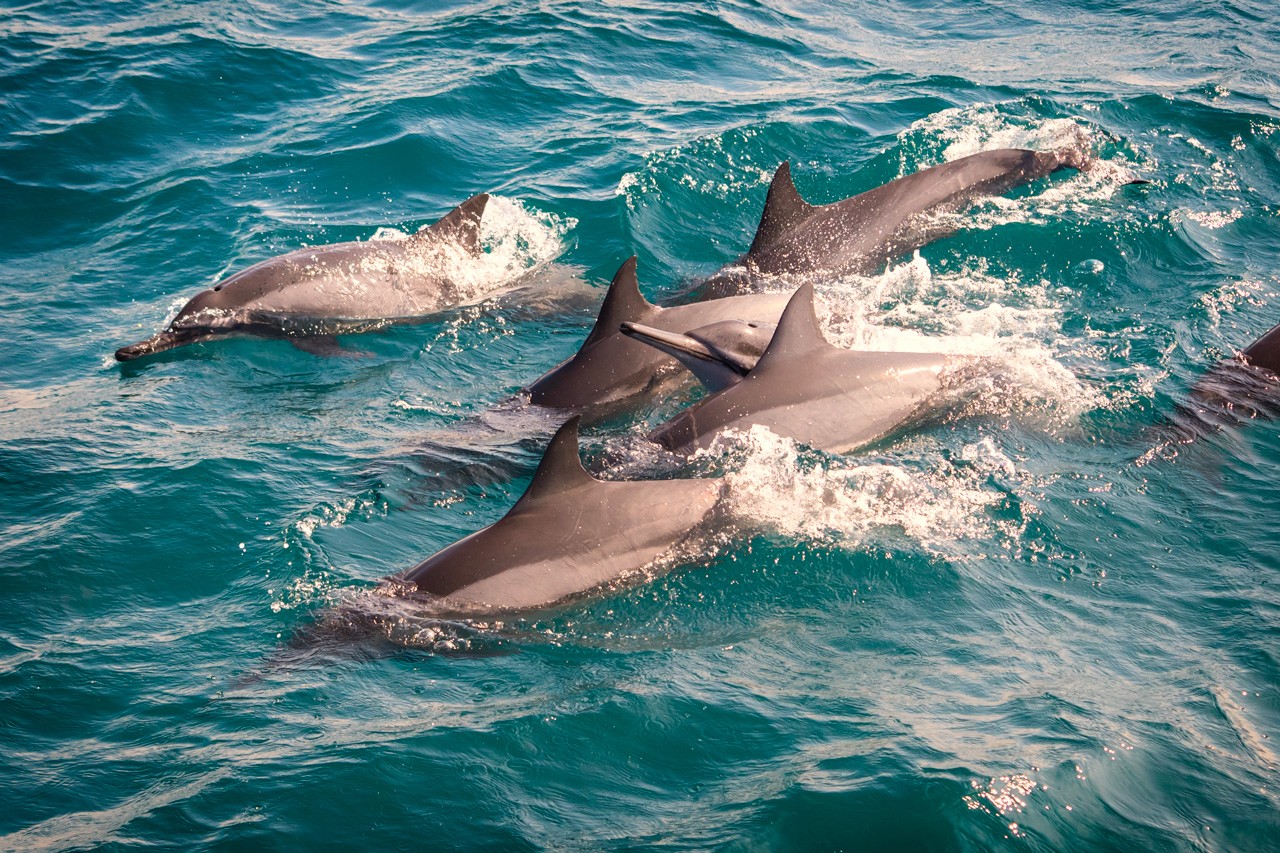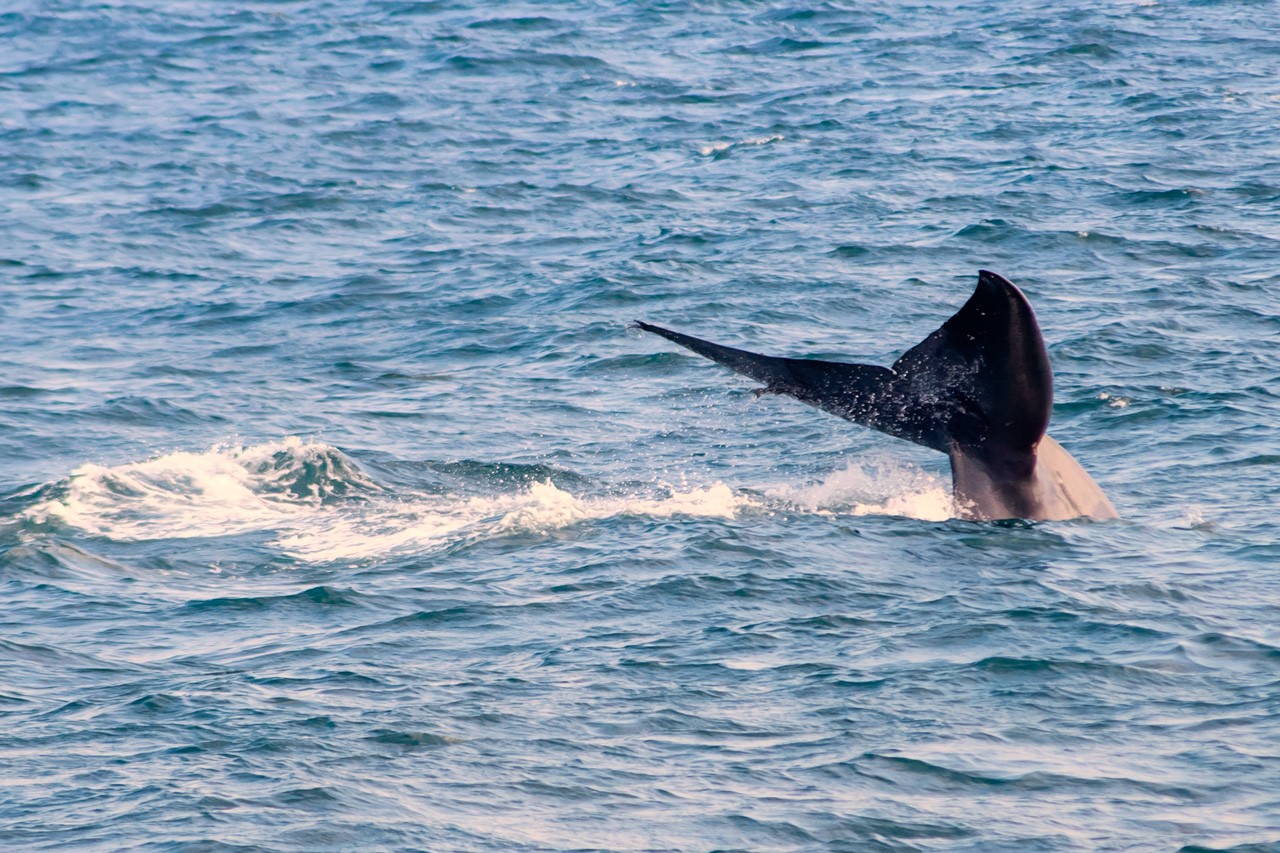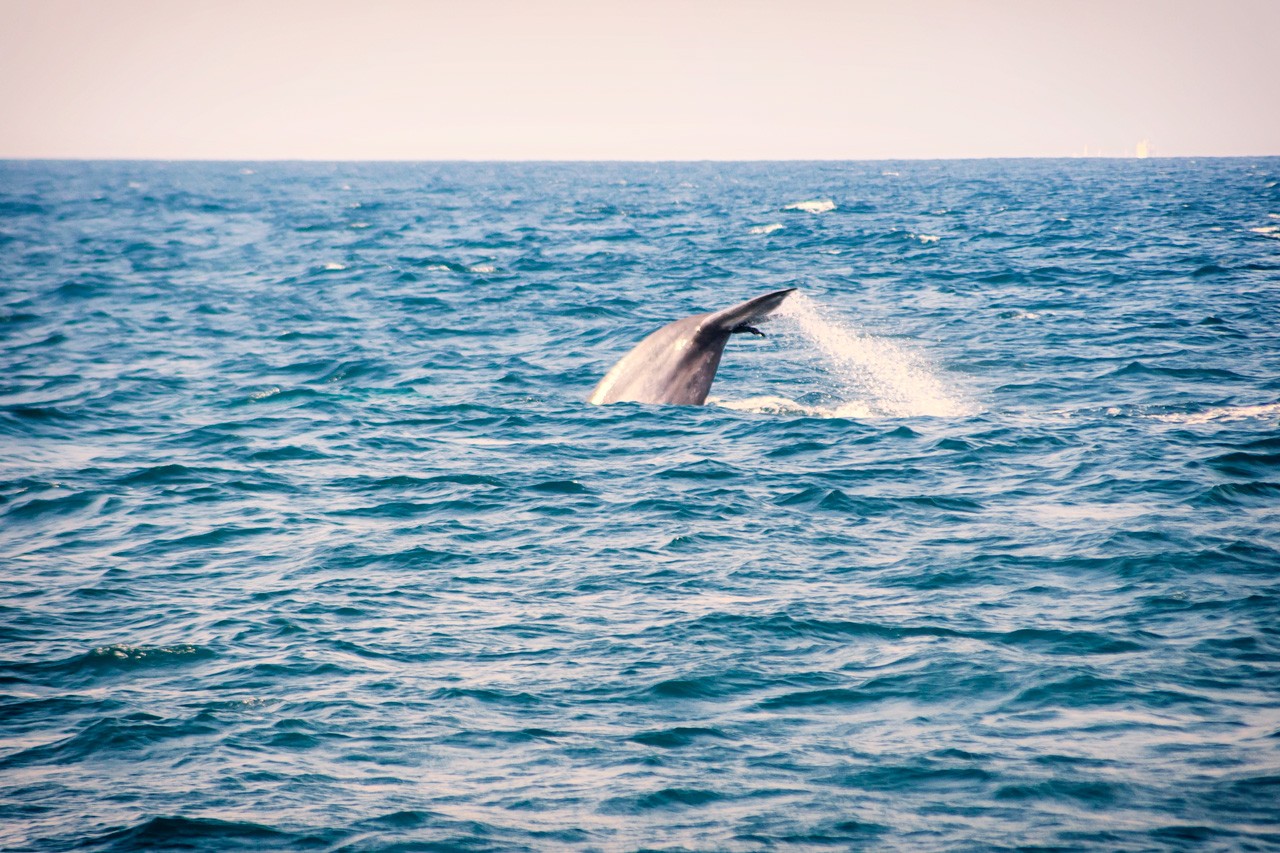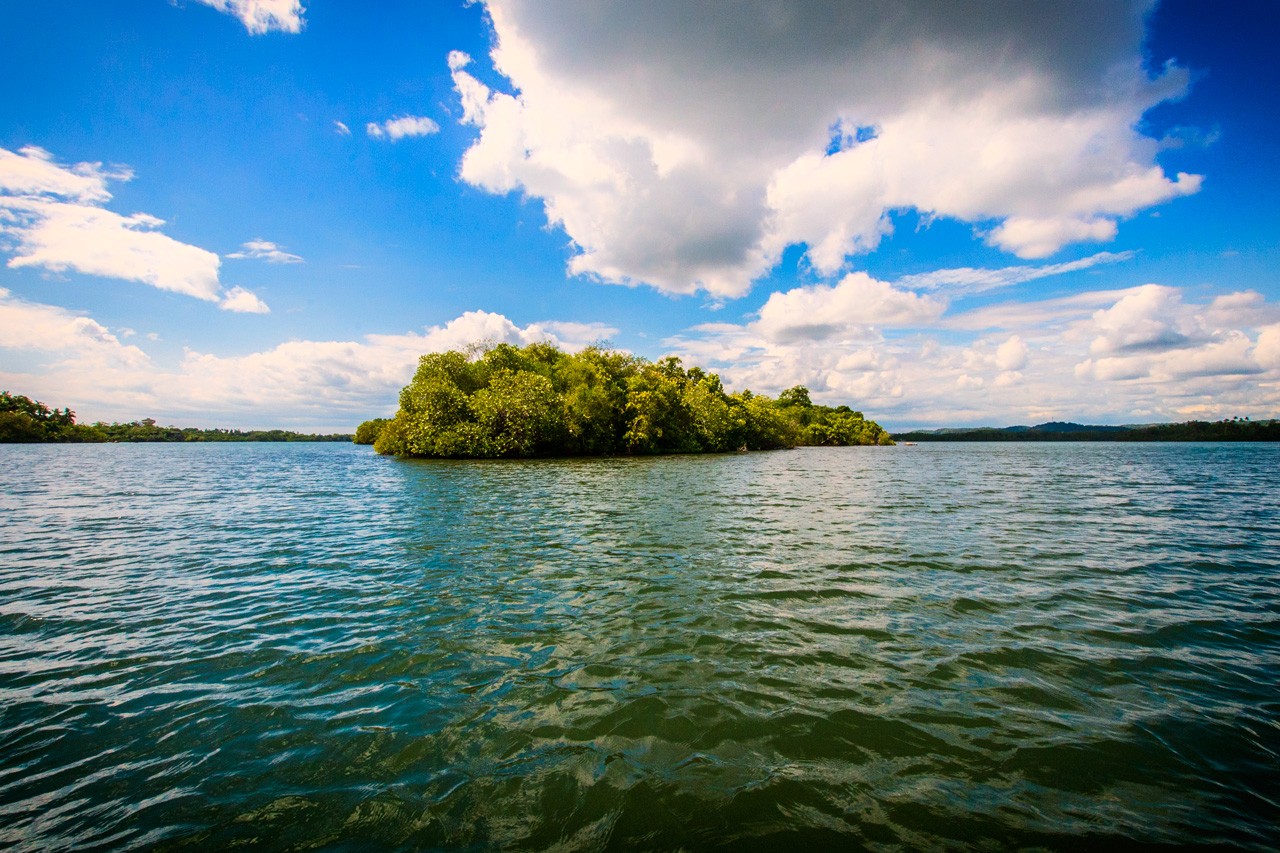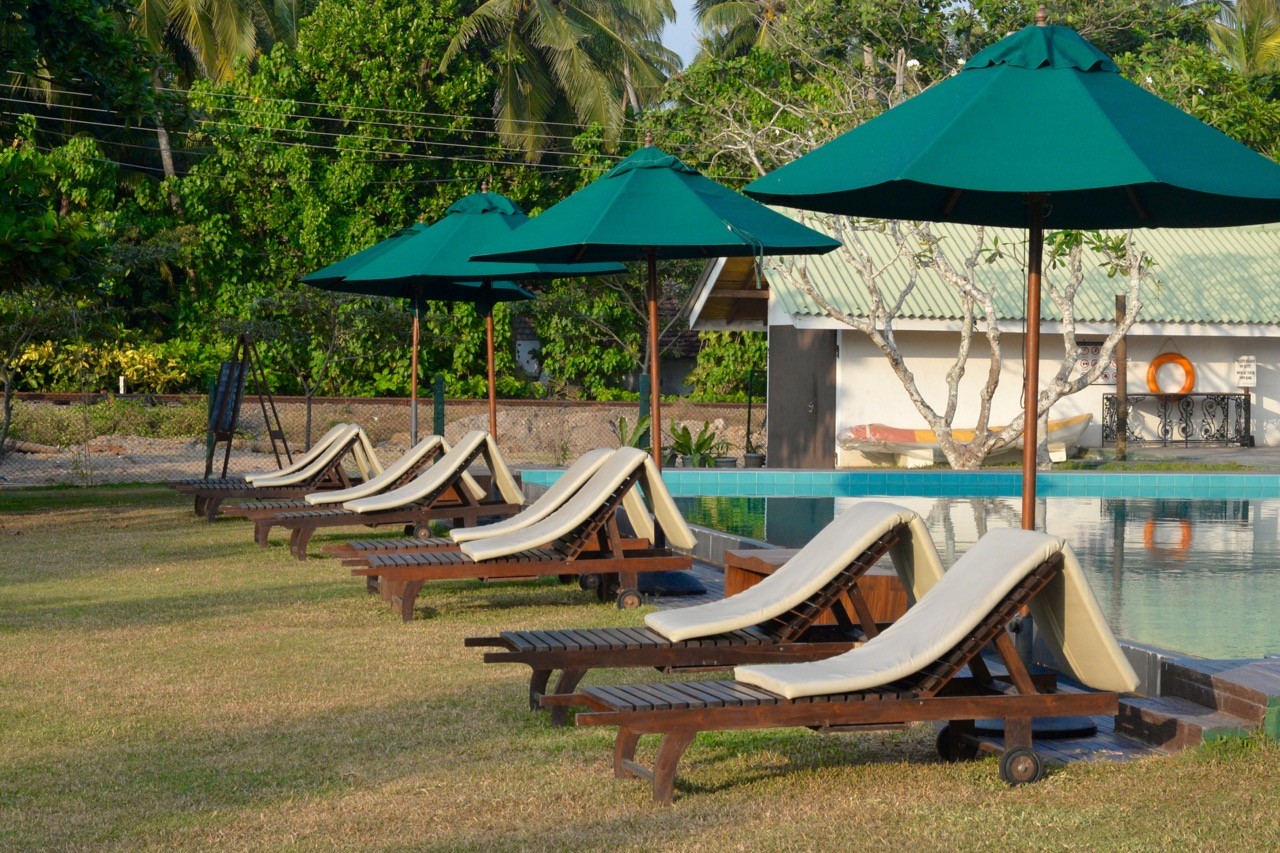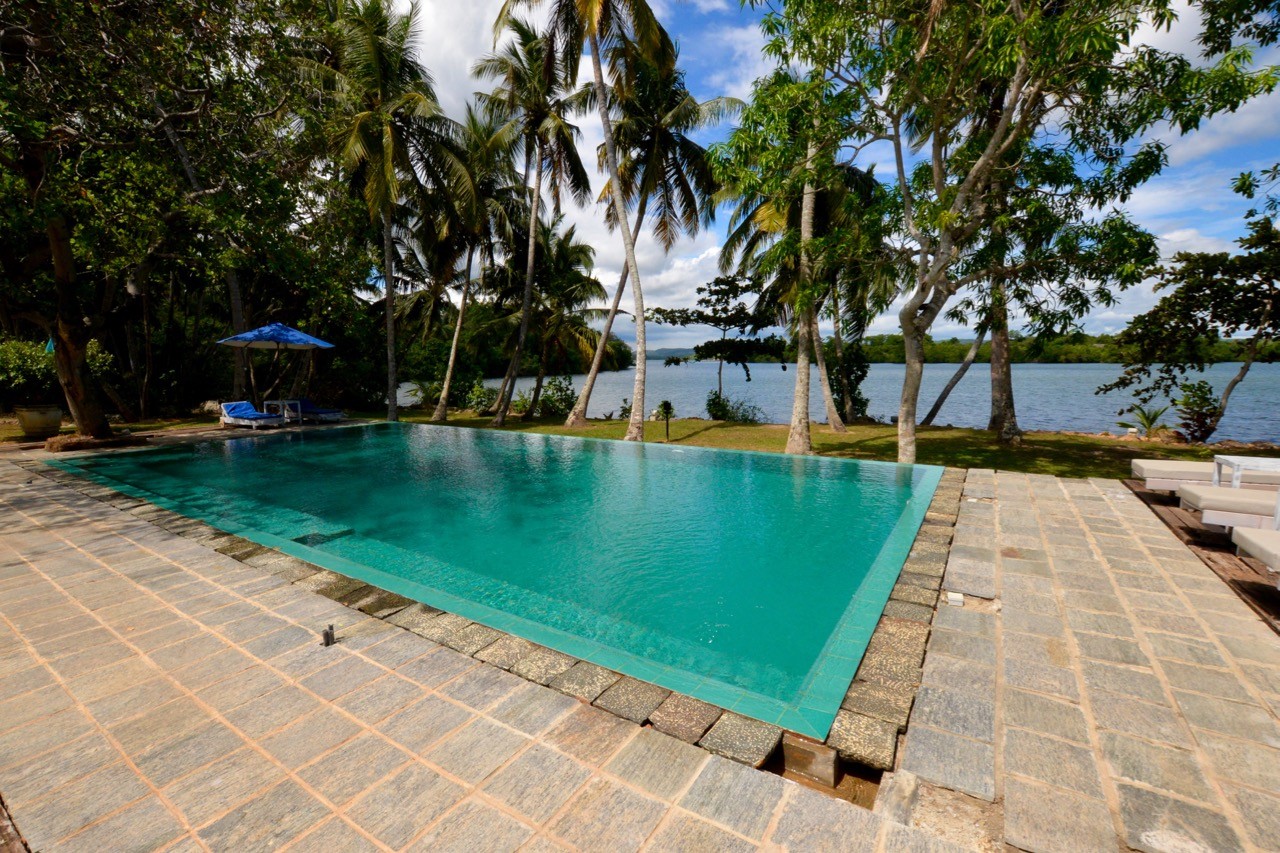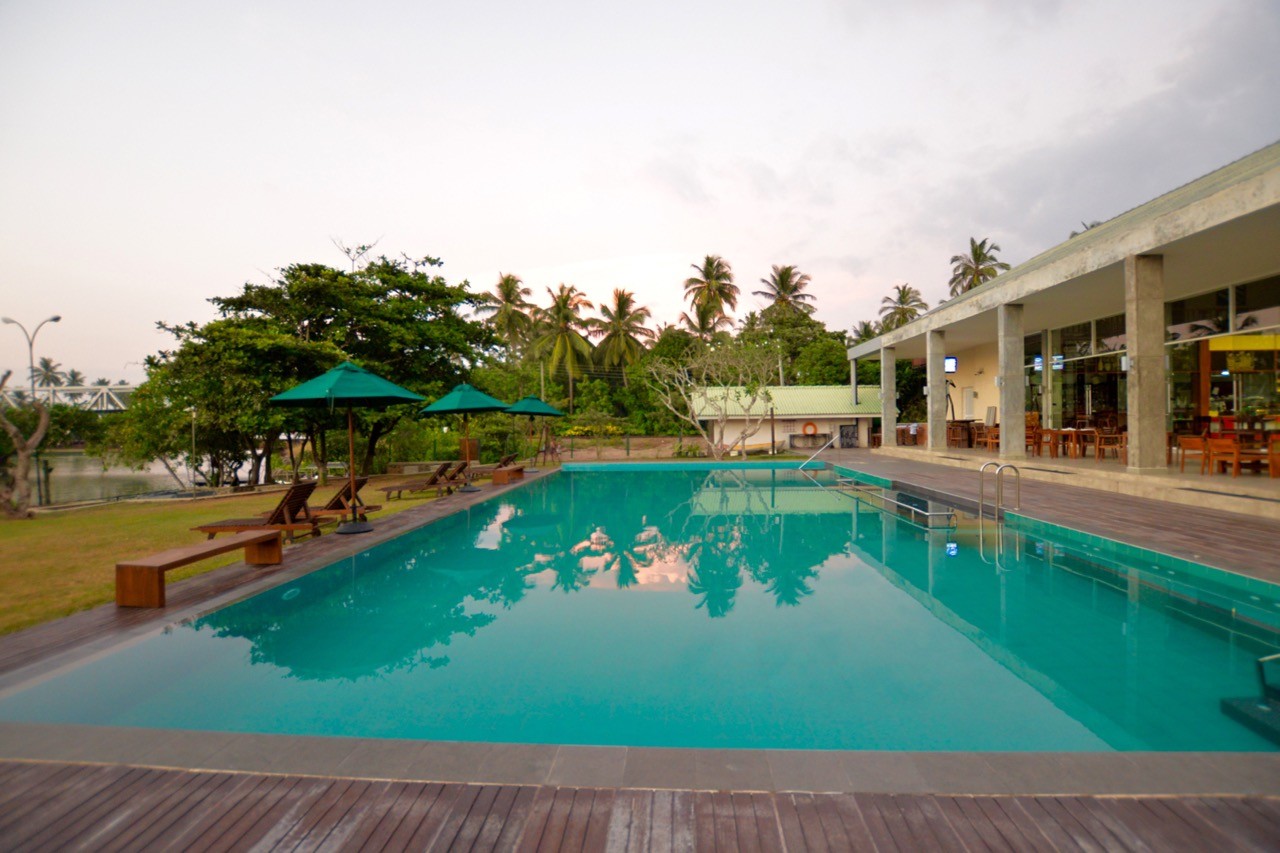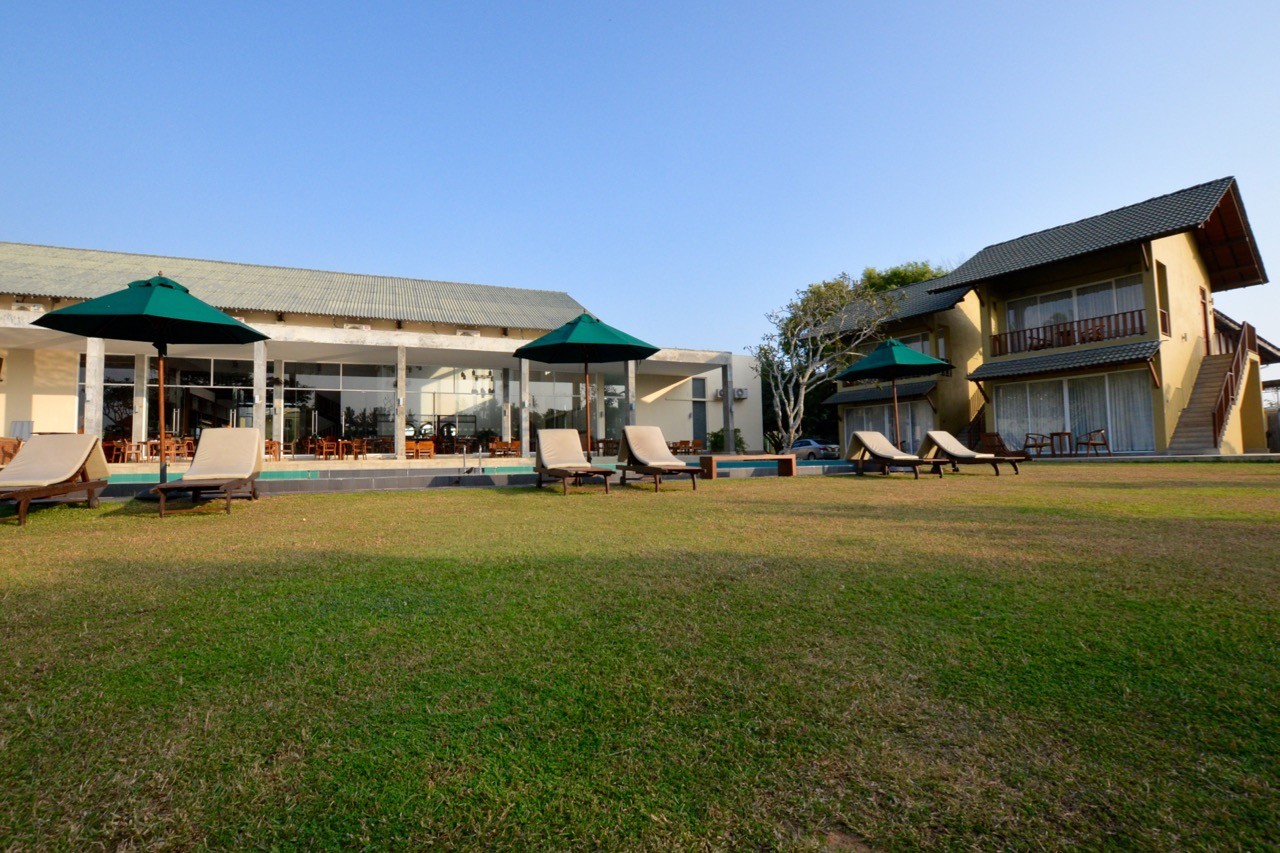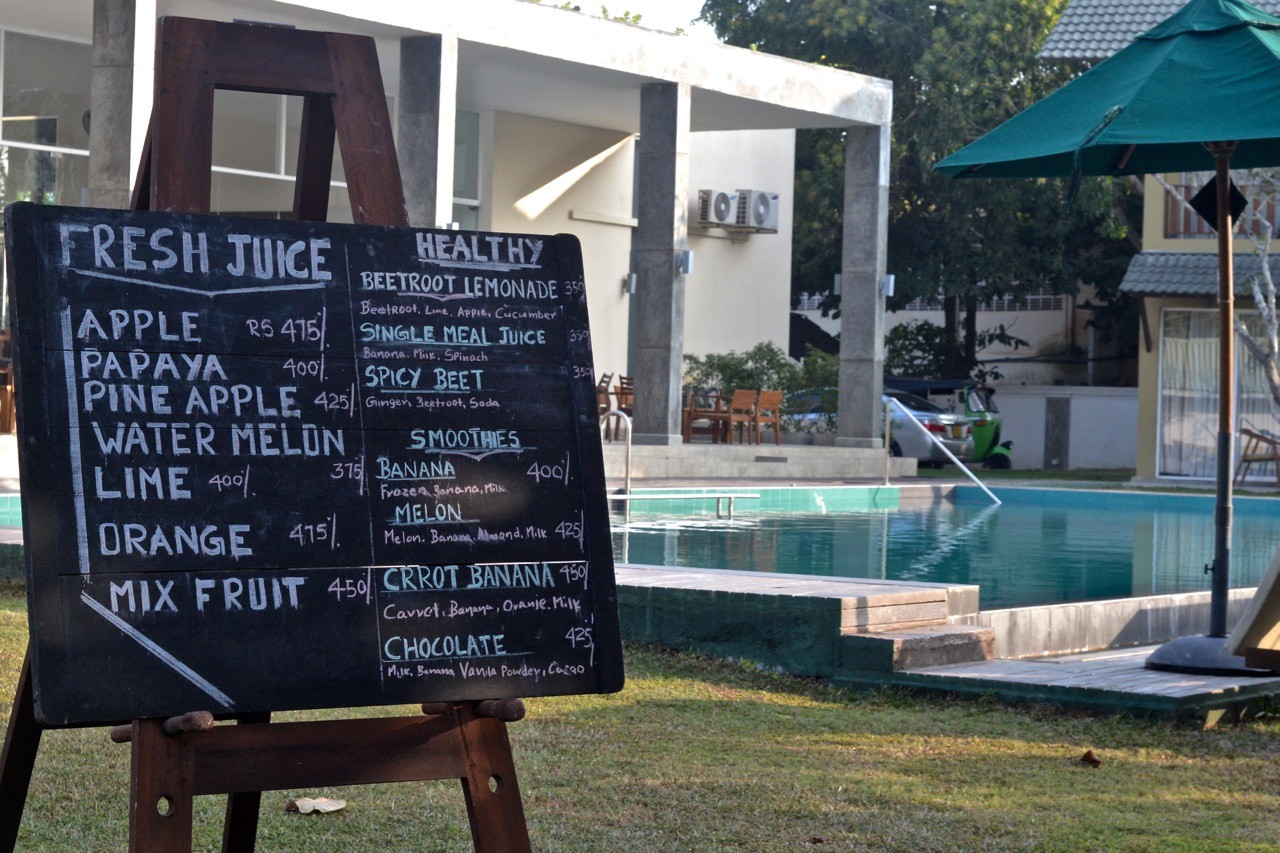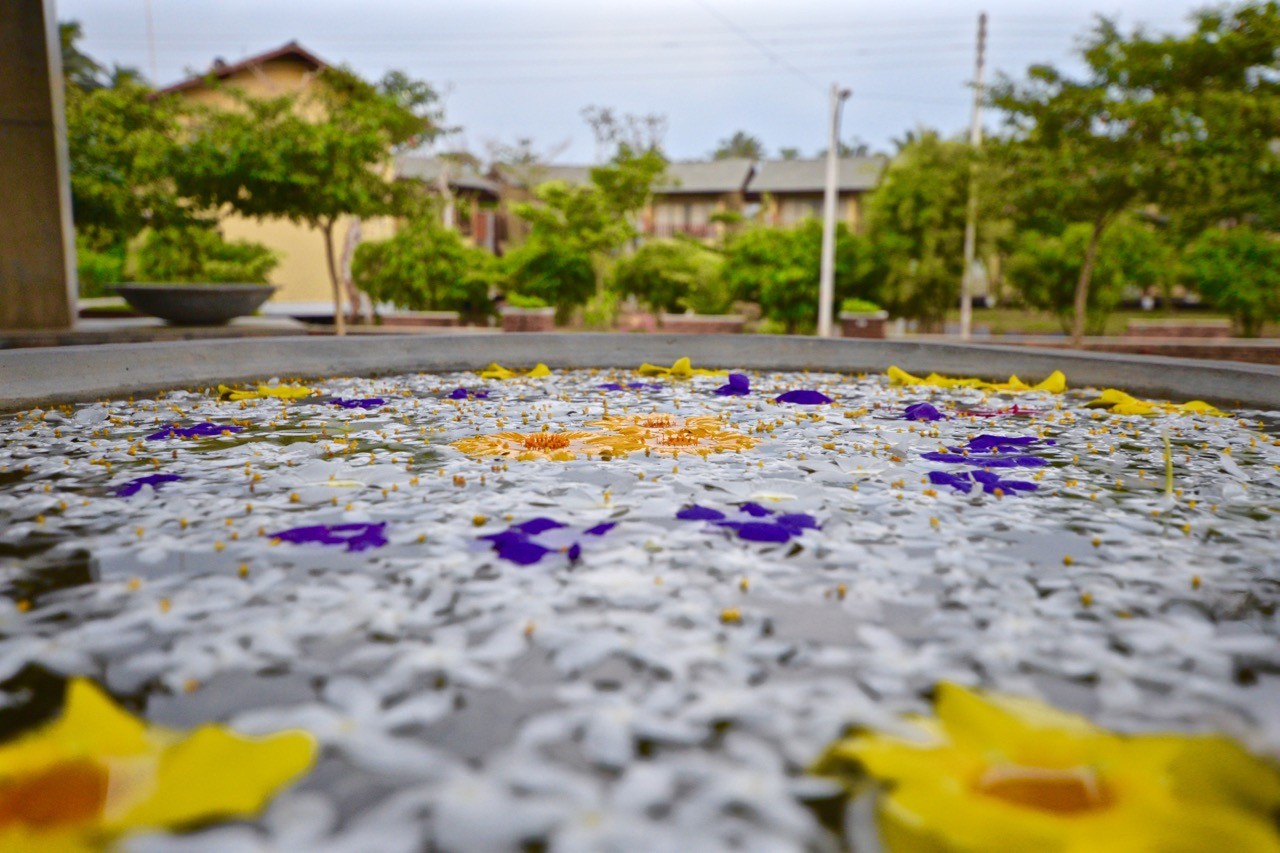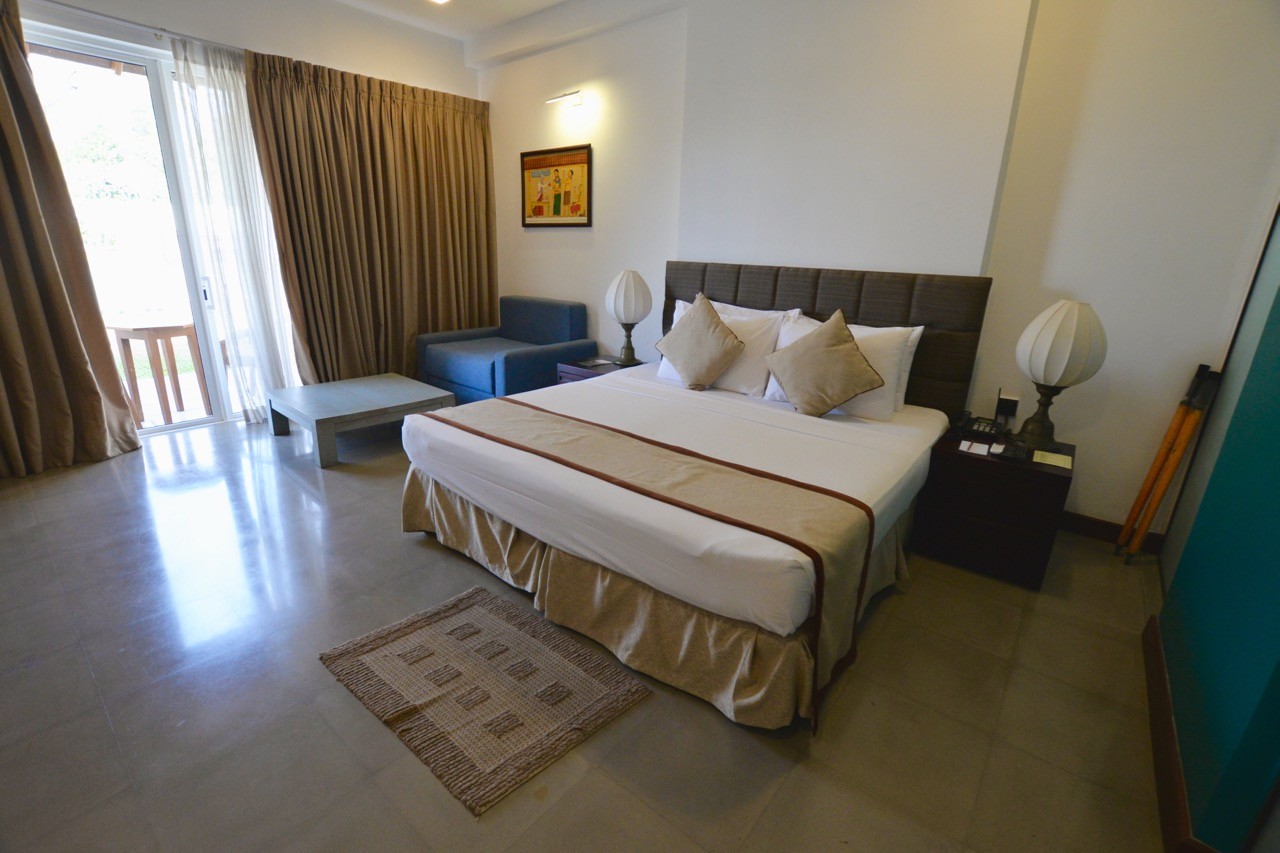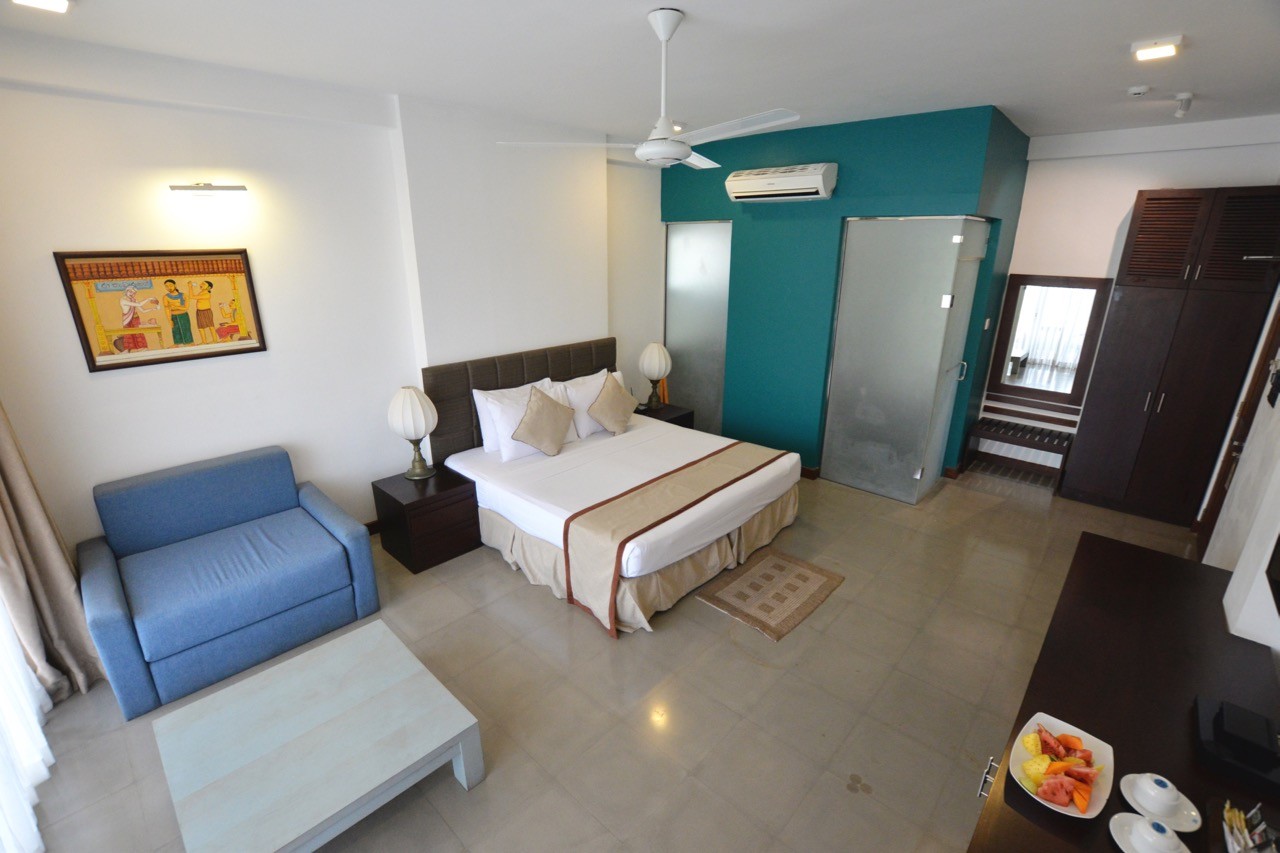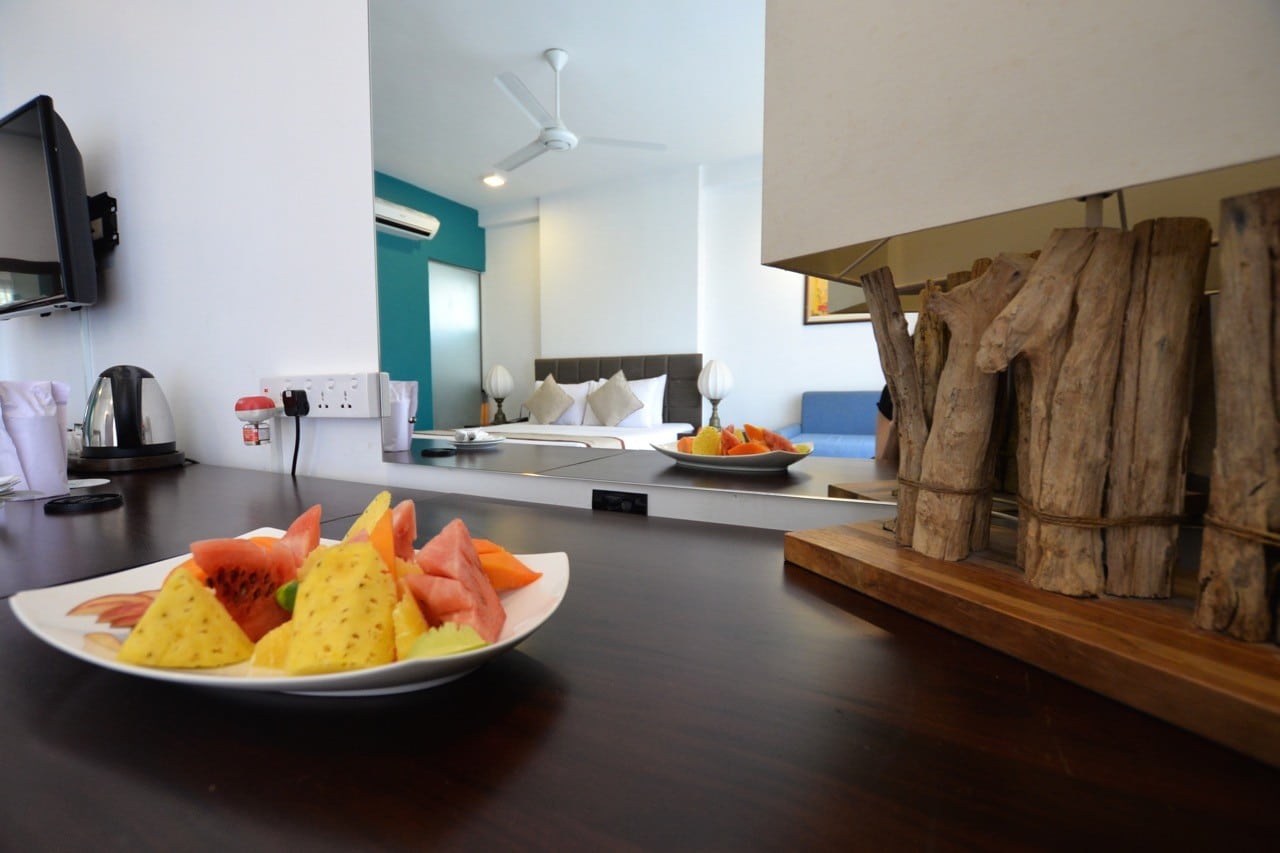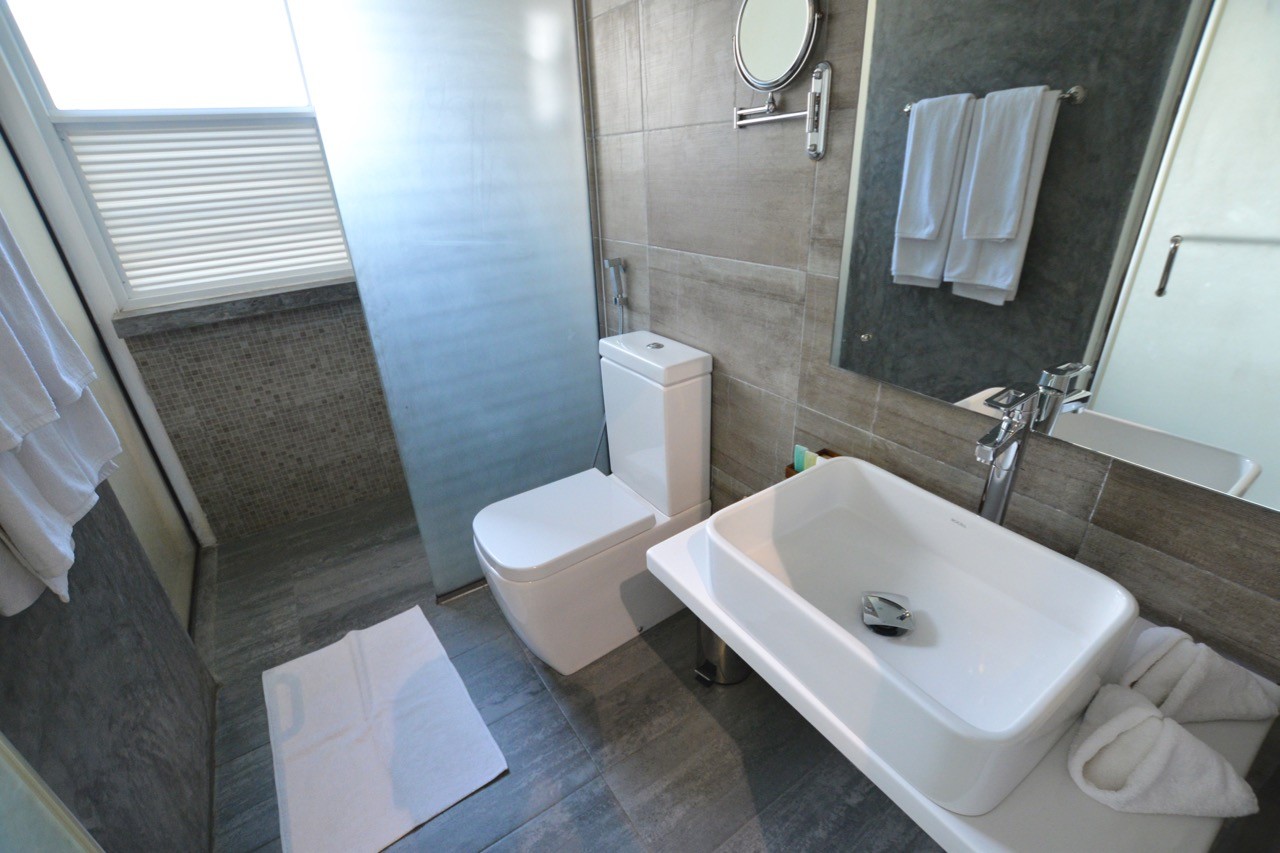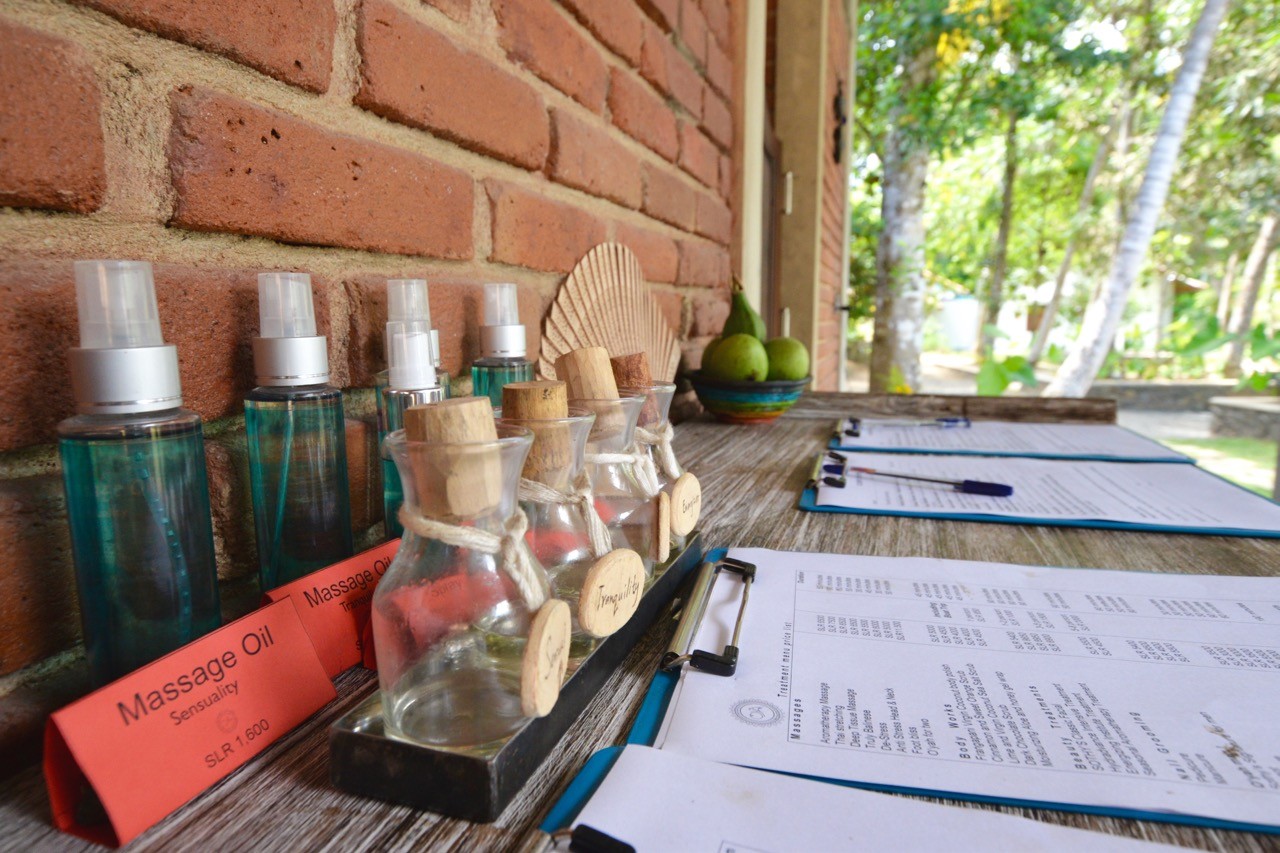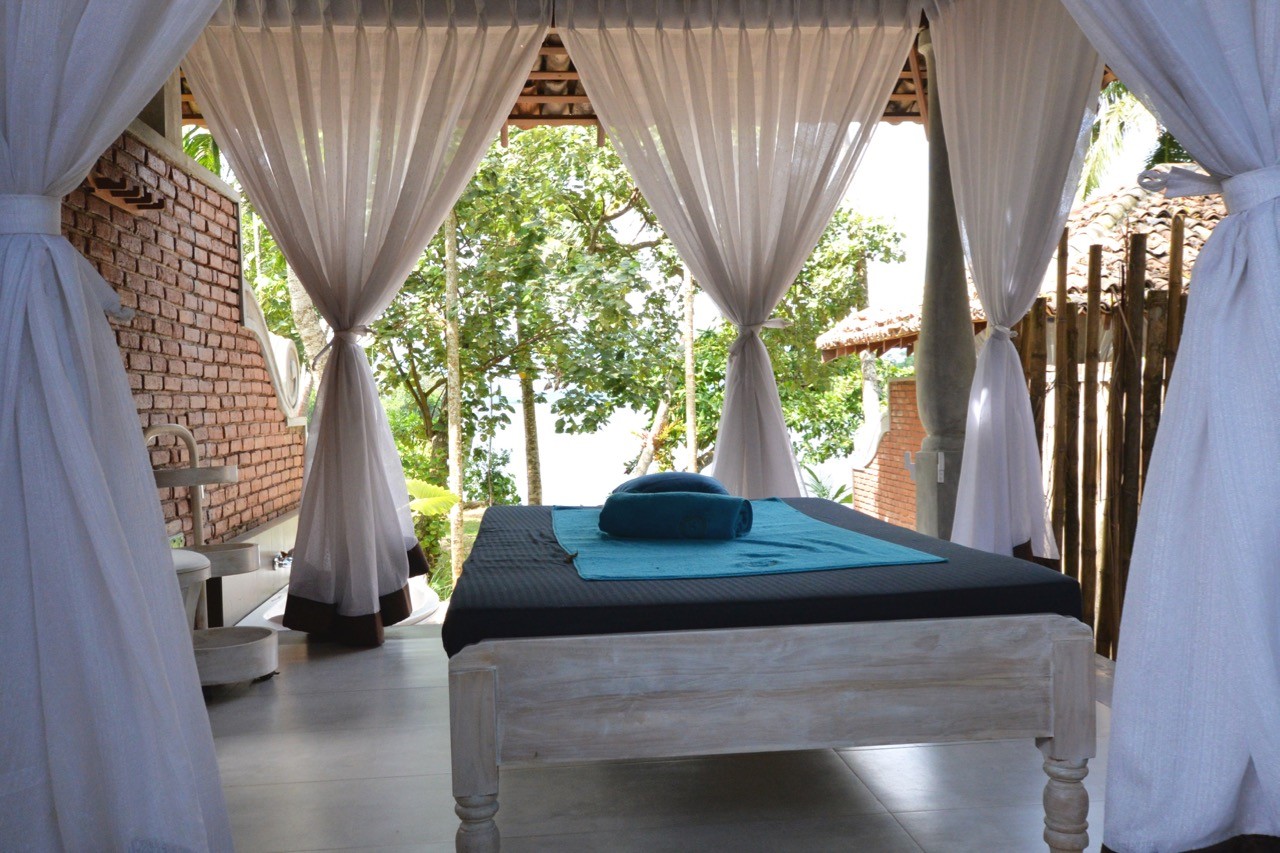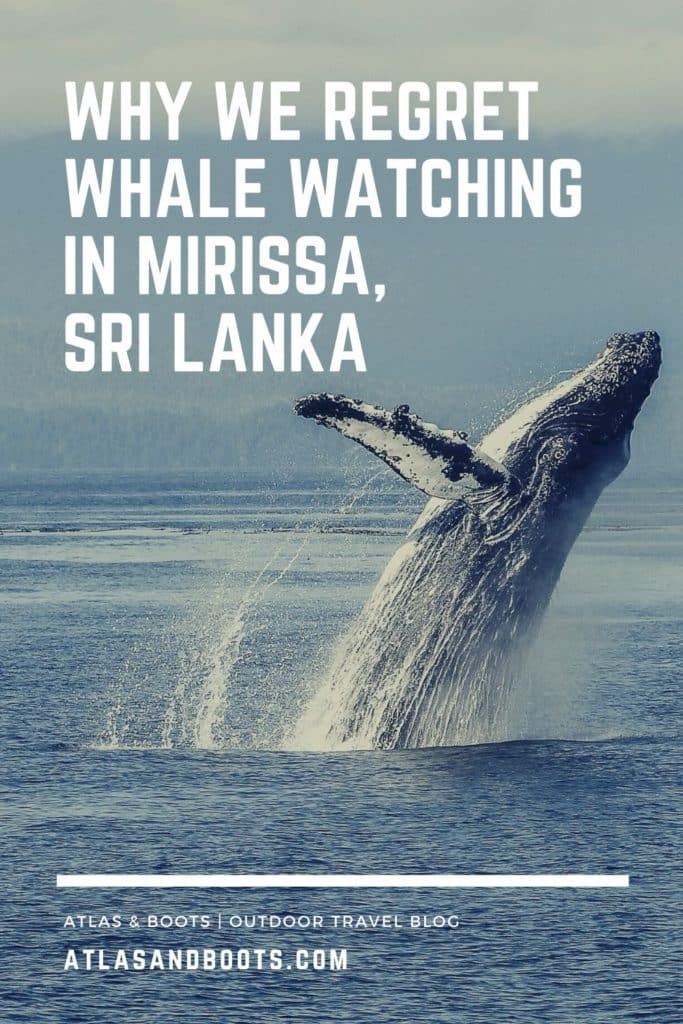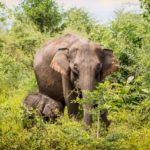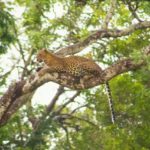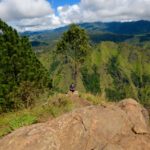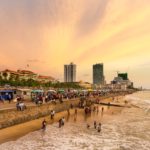Whale watching in Mirissa is touted as a must-do, but tetchy tourists, crowded boats and unethical practices make for a deeply unsettling experience
Our first mistake was yielding to the hype. Sri Lanka is said to be the world’s only country in which you can see the largest land mammal (the elephant) and the largest water mammal (the blue whale), so we made whale watching in Mirissa a priority.
Our second mistake was using a local recommendation instead of our Sri Lanka guidebook – and thus we found ourselves at Mirissa harbour at 7am being herded onto a two-storey boat with 80 other people.
We placed our shoes in the communal storage box and gingerly headed upstairs. We found two empty seats at the back and pulled on our life jackets, watching in dismay as more and more people filed onto the boat with giant lenses and selfie sticks in tow.
Okay, I told myself. Don’t be a twat. Having enjoyed several wildlife experiences on a far smaller scale (e.g. swimming with whales in Tonga, diving with sharks in the Galápagos) clearly I’d forgotten how the less-discerning travel. (I know, I know, I’m being a twat.)
I set aside my snobbishness and readied for the ride – as did hundreds of others. You see, our boat was one of about 20 heading out that morning, each packed to the gills with tourists. We set off in hunt of prey, our glut of vessels akin to an armada.
Thirty minutes later, the captain (or it could have been crew; they all wore t-shirts labelled ‘Captain’), pointed out a pair of turtles. The passengers stampeded starboard in a desperate bid to claim some space.
A short while later, we encountered a delightful group of dolphins. Tempers sparked as elbows jabbed and selfie sticks wove through the smallest of gaps. Of course, we were all too passive-aggressive to actually say anything to each other.
By the time the whales showed up (about an hour in), the tension in the air was taut. Did the space by the rail belong to me because I was sitting next to it? What if I couldn’t get to it fast enough? What if the whales appeared on the other side? What if he got a good photo and I didn’t? These were clearly the questions preying on people’s minds.
When the first whale appeared, passengers pushed and shoved to get a good look. Sadly, some were less than impressed. We saw glimpses of whales (a tail dipping out of the water, a spine gliding in and out), but we would-be Attenboroughs were fuelled by Planet Earth and Google Images; we were expecting more goddammit!
On a serious note, the whales were majestic of course but it was difficult to enjoy the experience, not only because the boat was crowded but because the whales were crowded too. Most whale watching operators in Mirissa follow international guidelines for approaching the mammals, but the sheer volume of boats is simply unnatural.
At one point, I looked around and counted 17 boats chasing the one whale. There was just no justification for us being there. I don’t doubt that the smaller boats and more conscientious operators offer a better service but they still contribute to the overcrowding.
It reminded me yet again of the benefits of tourism caps. Whale watching in Mirissa can be a force for good; it can foster education and conservation, and contribute sustainably to the local economy – but only if it’s moderated and regulated.
We are told that the Sri Lanka Coast Guard has increased efforts in monitoring whale watching in Mirissa to uphold the Sea Mammals Observation, Regulation and Control Regulations, which specify the distances to be maintained, methods of approach, and maximum boat speeds to ensure that the whales’ natural habitat is not disturbed.
Sadly, my admittedly untrained eye can’t see how we’re not disturbing the whales. With so many boats – each at carrying capacity – converging on a daily basis, I cannot believe that the whales remain blissfully unaware of the intrusion.
In lieu of tighter controls, tourists can ease the strain in a more direct way: by not whale watching in Mirissa. A marked drop in tourism would send a clear signal to the authorities: regulate or lose the tourist dollars. If this sounds like issuing a ransom, then that is what’s intended. As detailed in the world is not getting better, biodiversity is bigger than us.
If you simply can’t leave the country without watching whales, opt for Trincomalee on the east coast instead. This relatively quiet slice of the country has excellent excursions not yet loudly touted with the specific objective of “not turning into Mirissa” we’re told. Organise a trip through Trinco Blu.
As for Mirissa, what is there to do other than whale watching? Well, nothing really. We recommend heading to nearby Koggala instead. There are no whales, but it has a picturesque beach and offers an excellent base from which to visit UNESCO World Heritage Site Galle Fort as well as Koggala Lake.
And the best thing of all? There are no passive-aggressive tourists who would sooner gouge out your eye than give you an inch of space.
Whale watching in Mirissa: the essentials
What: Whale watching in Mirissa. As mentioned above, forego the whale watching and instead use nearby Koggala to visit Galle Fort and explore Koggala Lake.
Where: We stayed at South Lake Resort in Koggala, 20km west of Mirissa. The hotel offers a range of spacious rooms overlooking the lake or garden and is minutes from the beach where local fishermen perch on seaborne stilts.
The restaurant offers a range of international cuisine – although the local fare was by far the tastiest!
Activities in the region include visiting Galle Fort, surfing in Kathaluwa and sailing on Koggala Lake. Naturally, you could simply laze on the beach instead or indulge in a treatment at Spa Oya, a slice of calm a boat ride from the hotel.
Atlas & Boots
When: The best time to visit Mirissa, Koggala and the southern coast of Sri Lanka is December to April when rainfall is low.
How: You can reach Koggala by rail from Colombo (check timetable here). South Lake Resort is a short walk or tuk tuk ride from the station (1km).
There are various bus routes available depending on your point of origin. It’s worth noting that we found bus travel to be quite stressful in Sri Lanka so you may wish to take a transfer instead. Your hotel can arrange this but it’s always worth negotiating a discount as these are usually inflated (e.g. if quoted 15,000 LKR, ask for 11,000).
Many tourists opt to hire a driver for the entirety of their trip. This costs around $45 USD per day (including the days you don’t use the driver). We used Ajaa (+94 777 284 178) and Sisi (+94 777 203 083) for shorter transfers and found them to be friendly and reliable.
Most international flights land in Bandaranaike International Airport (CMB). Book via Skyscanner for the best prices.
Enjoyed this post? pin it for later…
Lonely Planet Sri Lanka is a comprehensive guide to Sri Lanka, ideal for those who want to both explore the top sights and take the road less travelled.
